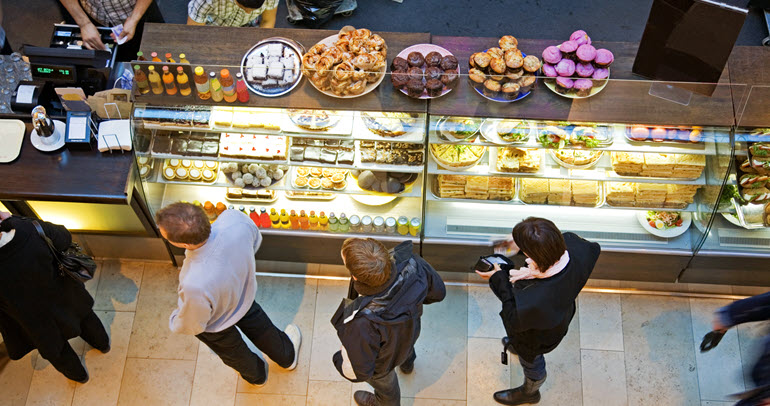
There’s no doubt that online sales are growing. In fact, at 16%, online retail sales growth is swiftly outpacing in-store sales growth, which stands at 3.4%. But before you close up shop, consider the other side of this story: Most of that growth is attributed to brick-and-mortar retailers adding online sales to their mix. Plus, when it comes to total sales, brick-and-mortar stores lead the way. In 2017, in-store sales increased by $152.7 billion, while ecommerce and online sales increased by only $62.5 billion.
So, while the Amazon effect is very real, it’s not as scary as it seems. But that doesn’t mean you can ignore the fact that digital is woven into the daily lives of your customers, or that many of them enjoy the ease and convenience of shopping for some of their favorite items from the comfort of their own couch.
What it does mean is that if you want your customers to continue visiting your brick-and-mortar store, you’ll need to make a few changes.
Industry Disruption Happens When Consumer Needs Are Not Met
According to our self-funded study, music, books and movies is one of only two categories in which online shopping is higher than traditional retail. Not surprising, but if you take a quick step back in time, you can see how some of the biggest names faded into oblivion because they refused to pay attention to how technology was changing the dynamic between buyer and seller.
- Years ago, the recording industry sued hundreds of online music consumers because it wanted to keep control of the music business model. While the industry was focused on that, consumers were finding ways to get what they wanted. The result was the fall of a business model built to suit the industry rather than its consumers.
- Blockbuster’s video stores were pushed out when Netflix tuned into customers’ needs by offering the convenience of delivering movies to their doorstep, free shipping and no late fees. Netflix later used technology to offer instant gratification with online streaming. Netflix and other online streaming companies are currently disrupting the traditional television industry, giving the latter a run for its money.
- Sears, the original great disruptor, has fallen due to its inability to adapt to current market needs. Sears was once a swashbuckling retailer that inserted itself into multiple aspects of common life, including mail order homes (Sears Modern Home), and the company was bold enough to actively upend Jim Crow laws. But, in the current market, Walmart and Target have won the bid for lowest-cost, quality goods. Sears could no longer compete with the cost structure and despite multiple attempts to improve the bottom line, it didn’t reinvent itself with consumers in mind.
The list goes on. But your brick-and-mortar store doesn’t have to suffer the same fate.
Three Principles of Retail Survival
- Get to know your customers: Before you take any other action, find out what draws people to your store as well as your competitors’ stores. Understand how they like to shop. Do they want to touch and feel products before they buy? Do they enjoy getting in-person advice from store associates? Find out what makes your store stand out and build on it.
- Step up the in-store experience: Finding a way to blend the digital and physical store experiences is a great way to keep customer engagement high. Home Depot’s mobile app provides a digital map that directs customers to the aisle and location of the product they’re looking for. Crate and Barrel lets customers take photos of their living room and then place an image of the furniture they like on top for a 3-D experience that mimics the real world. Take advantage of digital technologies to appeal to both online and in-store customers.
- Take a different tactic: If you’re not quite ready to dive into the world of apps and augmented reality, don’t worry. With many technologies available, it’s easier than ever to try something new. You just have to keep your eyes open. Take social media. These tools can have a major impact if you get in front of the right audience. Allow customers to use their mobile phone to shoot quick videos about their in-store experience and upload them to YouTube, let shoppers know about upcoming sales with Facebook posts, or ask customers to upload images of themselves to Instagram using products purchased in your store.
Get Ready. The Retail Game Is Changing.
Online sales are here to stay. Rather than a threat, digital retail provides a major opportunity to get to know your customers better and give them exactly what they want. By incorporating digital tactics and retail industry research into your brick-and-mortar sales repertoire, you can keep the registers ringing and the doors wide open for many years to come.
Download our brick-and-mortar store report. This report will give you insight into how people shop, where we expect growth in online shopping, proven strengths of brick-and-mortar stores, and how brick-and-mortar stores can use this information to better prepare for future and potentially unexpected changes in retail.








